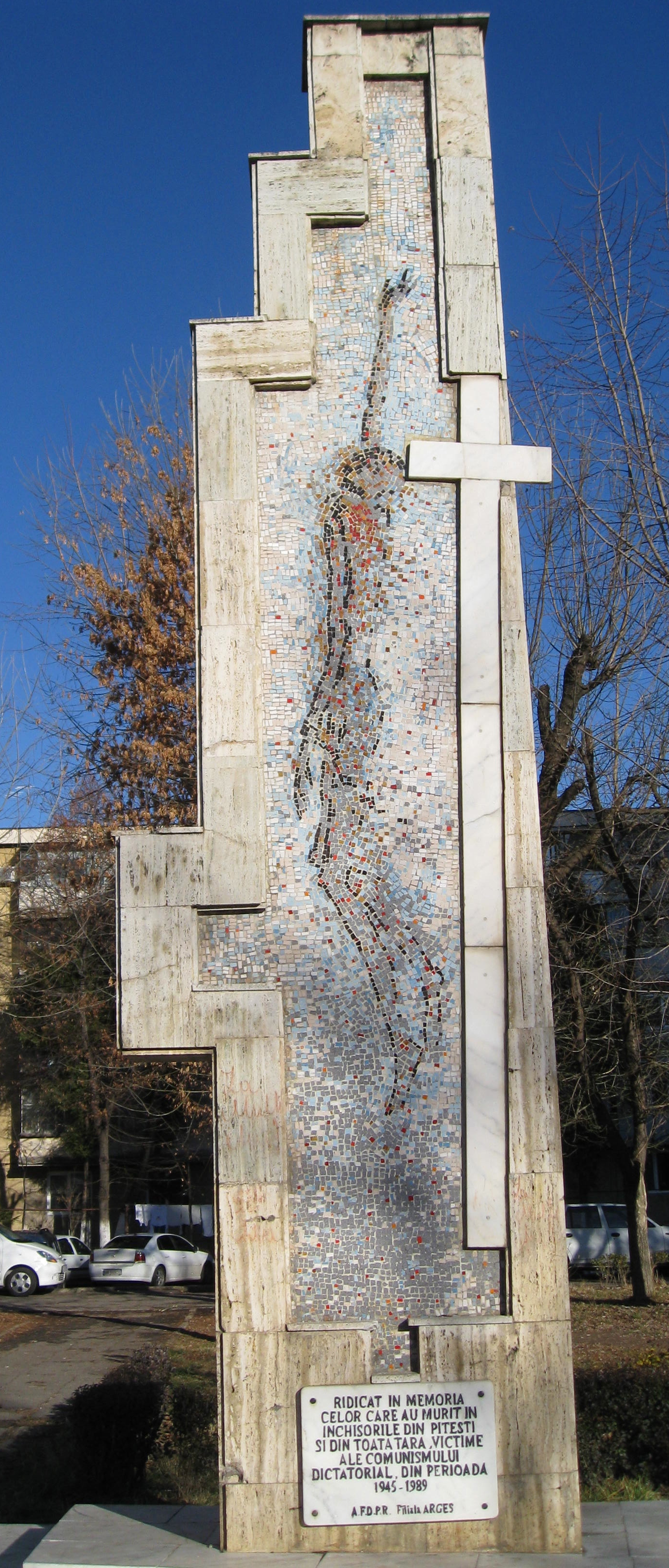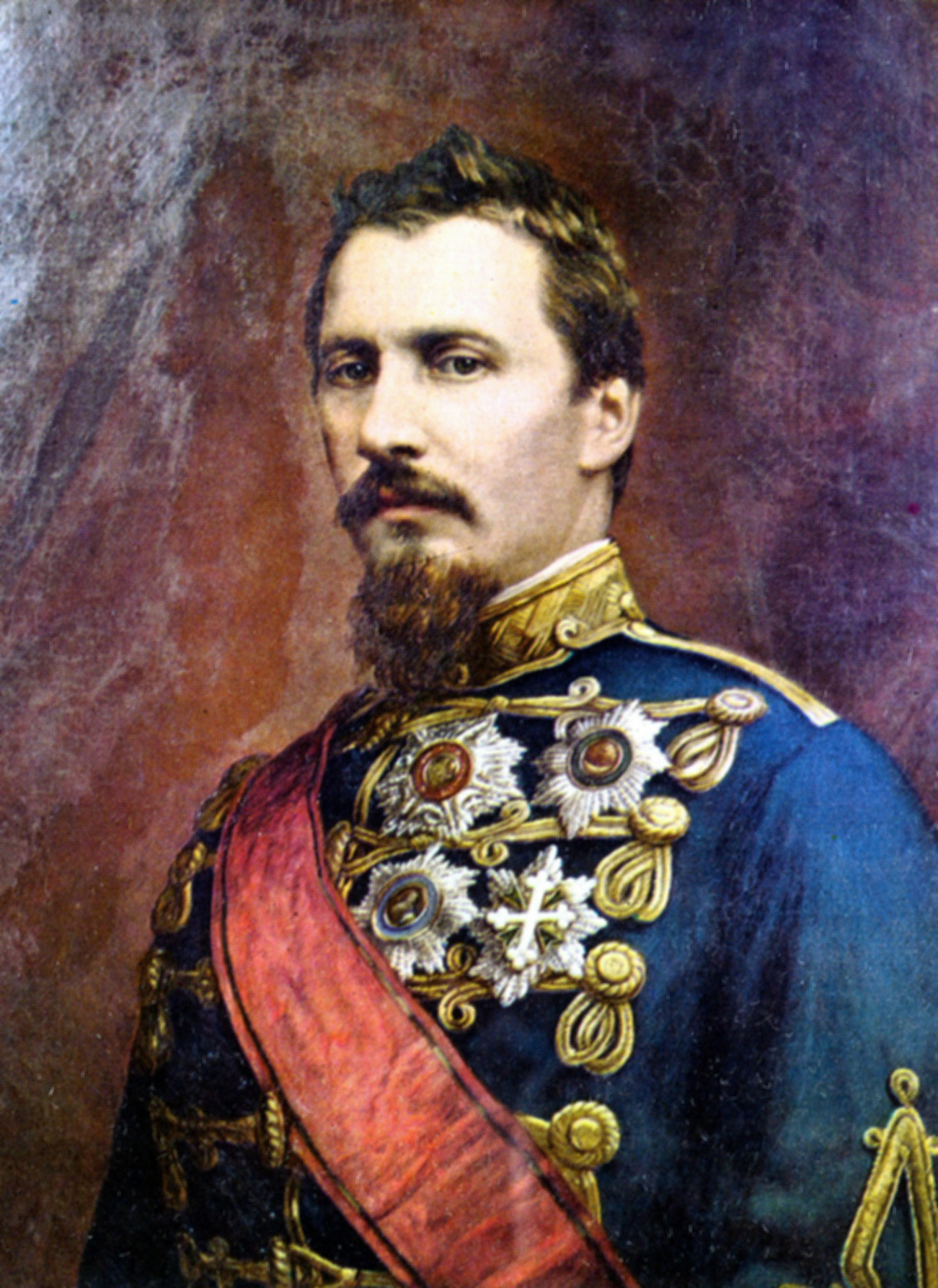|
Eugen Țurcanu
Eugen Țurcanu (8 July 1925 – 17 December 1954) was a Romanian criminal who led a group that terrorized their fellow inmates during the late 1940's at Pitești Prison in Pitești, Romania. In a well publicized trial, Turcanu and fifteen of his accomplices were convicted in the deaths of several inmates and executed. As a young man, Turcanu was a local communist official studying for a career in diplomacy. However, in 1948, he went on trial for his involvement with the Iron Guard of the previous regime and was sentenced to seven years in prison. With the tacit approval of the prison administration, Turcanu formed a group of inmates to obtain information and police the ideological beliefs of the prison population, using torture and deadly force when necessary. When his activities became public knowledge in the West, Romanian authorities put Țurcanu on trial in 1954. Biography Early life and Iron Guard Țurcanu was born either in Păltiniș, Dârmoxa (today part of Bro� ... [...More Info...] [...Related Items...] OR: [Wikipedia] [Google] [Baidu] |
Suceava County
Suceava County () is a county ('' ro, județ'') of Romania. Most of its territory lies in the southern part of the historical region of Bukovina, while the remainder forms part of Western Moldavia proper. The county seat is the historical town of Suceava (german: Suczawa, also Sotschen or Sutschawa; historically known in Old High German as ''Sedschopff'' as well) which was the capital of the Principality of Moldavia during the late Middle Ages and then a pivotal, predominantly German-speaking commercial town of the Habsburg/Austrian Empire and Austria-Hungary at the border with the Kingdom of Romania throughout the late Modern Age up until 1918. Suceava County, as part of the historical and geographical region of Bukovina, had been sometimes described as "Switzerland of the East". It has also been known as "Switzerland of Eastern Europe" in the minds of the educated public. Demographics In 2011, Suceava County had a population of 634,810, with a population density of 74/km ... [...More Info...] [...Related Items...] OR: [Wikipedia] [Google] [Baidu] |
Legionnaires' Rebellion And Bucharest Pogrom
Between 21 and 23 January 1941, a rebellion of the Iron Guard paramilitary organization, whose members were known as Legionnaires, occurred in Bucharest, National Legionary State, Romania. As their privileges were being gradually removed by the ''Conducător'' Ion Antonescu, the Legionnaires revolted. During the rebellion and subsequent pogrom, the Iron Guard killed 125 Jews, and 30 soldiers died in the confrontation with the rebels. Following this, the Iron Guard movement was banned and 9,000 of its members were imprisoned. For details of the Pogrom itself, see volume I, pp. 363–400. Background Following World War I Romania gained many new territories, thus becoming "Greater Romania". However, the international recognition of the formal union with these territories came with the condition of granting civil rights to ethnic minorities in those regions. The new territories, especially Bessarabia and Bukovina, included large numbers of Jews, whose presence stood out because of ... [...More Info...] [...Related Items...] OR: [Wikipedia] [Google] [Baidu] |
Iuliu Maniu
Iuliu Maniu (; 8 January 1873 – 5 February 1953) was an Austro-Hungarian-born lawyer and Romanian politician. He was a leader of the National Party of Transylvania and Banat before and after World War I, playing an important role in the Union of Transylvania with Romania. Maniu served as Prime Minister of Romania for three terms during 1928–1933, and, with Ion Mihalache, co-founded the National Peasants' Party. Arrested by the ascendant communist authorities in 1947 as a result of the Tămădău affair, he was convicted of treason in a show trial and sent to Sighet Prison, where he died six years later. Early years Maniu was born to an ethnic Romanian family in Szilágybadacsony, Austria-Hungary (now Bădăcin, Sălaj County, Romania); his parents were Ioan Maniu and Clara Maniu. He finished the Calvinist College in Zalău in 1890, and studied law at Franz Joseph University in Kolozsvár (Cluj), then at the University of Budapest and the University of Vienna, being ... [...More Info...] [...Related Items...] OR: [Wikipedia] [Google] [Baidu] |
Cambridge University Press
Cambridge University Press is the university press of the University of Cambridge. Granted letters patent by Henry VIII of England, King Henry VIII in 1534, it is the oldest university press A university press is an academic publishing house specializing in monographs and scholarly journals. Most are nonprofit organizations and an integral component of a large research university. They publish work that has been reviewed by schola ... in the world. It is also the King's Printer. Cambridge University Press is a department of the University of Cambridge and is both an academic and educational publisher. It became part of Cambridge University Press & Assessment, following a merger with Cambridge Assessment in 2021. With a global sales presence, publishing hubs, and offices in more than 40 Country, countries, it publishes over 50,000 titles by authors from over 100 countries. Its publishing includes more than 380 academic journals, monographs, reference works, school and uni ... [...More Info...] [...Related Items...] OR: [Wikipedia] [Google] [Baidu] |
Nationalities Papers
''Nationalities Papers'' is a peer-reviewed academic journal published by Cambridge University Press for the Association for the Study of Nationalities. The editor-in-chief is Harris Mylonas (George Washington University). It publishes articles on nationalism, minorities, and ethnic conflict, with a regional focus on Central and Eastern Europe, the Balkans, the former Soviet Union, Turkey, and Central Asia. The journal is interdisciplinary, with authors from a variety of backgrounds, including history, political science, sociology, anthropology, and literature. ''Nationalities Papers'' started in 1972 and currently publishes 6 issues per year. Abstracting and indexing ''Nationalities Papers'' is abstracted and indexed in International Bibliography of the Social Sciences, Scopus and the Social Sciences Citation Index. According to the ''Journal Citation Reports'', the journal has a 2018 impact factor The impact factor (IF) or journal impact factor (JIF) of an academic journal ... [...More Info...] [...Related Items...] OR: [Wikipedia] [Google] [Baidu] |
Securitate
The Securitate (, Romanian for ''security'') was the popular term for the Departamentul Securității Statului (Department of State Security), the secret police agency of the Socialist Republic of Romania. Previously, before the communist regime, Romanian secret police was called Siguranța Statului. It was founded on 30 August 1948, with help and direction from the Soviet MGB. Following the overthrow of Nicolae Ceaușescu in 1989, the new authorities assigned the various intelligence tasks of the DSS to new institutions. The Securitate was, in proportion to Romania's population, one of the largest secret police forces in the Eastern bloc. The first budget of the Securitate in 1948 stipulated a number of 4,641 positions, of which 3,549 were filled by February 1949: 64% were workers, 4% peasants, 28% clerks, 2% persons of unspecified origin, and 2% intellectuals. By 1951, the Securitate's staff had increased fivefold, while in January 1956, the Securitate had 25,468 employees.Cr ... [...More Info...] [...Related Items...] OR: [Wikipedia] [Google] [Baidu] |
Suceava
Suceava () is the largest urban settlement and the seat town ( ro, oraș reședință de județ) of Suceava County, situated in the historical region of Bukovina, northeastern Romania, and at the crossroads of Central Europe, Central and Eastern Europe. Klaus Peter BergerThe Creeping Codification of the New Lex Mercatoria Kluwer Law International, 2010, p. 132 During the late Middle Ages, namely between 1388 and 1564, this middle-sized town was the capital of the Moldavia, Principality of Moldavia. From 1775 to 1918, Suceava was controlled by the Habsburg monarchy, initially part of its Kingdom of Galicia and Lodomeria, then gradually becoming the third most populous urban settlement of the Duchy of Bukovina, a constituent land of the Austrian Empire and subsequently a crown land within the Cisleithania, Austrian part of Austria-Hungary. During this time, Suceava was an important, strategically-located commercial border town with the then Romanian Old Kingdom. Throughout the Aust ... [...More Info...] [...Related Items...] OR: [Wikipedia] [Google] [Baidu] |
Bucharest
Bucharest ( , ; ro, București ) is the capital and largest city of Romania, as well as its cultural, industrial, and financial centre. It is located in the southeast of the country, on the banks of the Dâmbovița River, less than north of the Danube River and the Bulgarian border. Bucharest was first mentioned in documents in 1459. The city became the capital of Romania in 1862 and is the centre of Romanian media, culture, and art. Its architecture is a mix of historical (mostly Eclectic, but also Neoclassical and Art Nouveau), interbellum ( Bauhaus, Art Deco and Romanian Revival architecture), socialist era, and modern. In the period between the two World Wars, the city's elegant architecture and the sophistication of its elite earned Bucharest the nickname of 'Paris of the East' ( ro, Parisul Estului) or 'Little Paris' ( ro, Micul Paris). Although buildings and districts in the historic city centre were heavily damaged or destroyed by war, earthquakes, and even Nic ... [...More Info...] [...Related Items...] OR: [Wikipedia] [Google] [Baidu] |
Alexandru Ioan Cuza University
The Alexandru Ioan Cuza University (Romanian: ''Universitatea „Alexandru Ioan Cuza"''; acronym: UAIC) is a public university located in Iași, Romania. Founded by an 1860 decree of Prince Alexandru Ioan Cuza, under whom the former Academia Mihăileană was converted to a university, the University of Iași, as it was named at first, is one of the oldest universities of Romania, and one of its advanced research and education institutions. It is one of the five members of the ''Universitaria Consortium'' (the group of elite Romanian universities). The Alexandru Ioan Cuza University offers study programmes in Romanian, English, and French. In 2008, for the third year in a row, it was placed first in the national research ranking compiled on the basis of Shanghai criteria. In the 2012 QS World University Rankings, Alexandru Ioan Cuza University was included in the Top 700 universities of the world, on the position 601+ , together with three other Romanian universities. The univers ... [...More Info...] [...Related Items...] OR: [Wikipedia] [Google] [Baidu] |
Journal Of Literature And The History Of Ideas
A journal, from the Old French ''journal'' (meaning "daily"), may refer to: *Bullet journal, a method of personal organization * Diary, a record of what happened over the course of a day or other period *Daybook, also known as a general journal, a daily record of financial transactions *Logbook, a record of events important to the operation of a vehicle, facility, or otherwise *Record (other) * Transaction log, a chronological record of data processing *Travel journal In publishing, ''journal'' can refer to various periodicals or serials: *Academic journal, an academic or scholarly periodical **Scientific journal, an academic journal focusing on science **Medical journal, an academic journal focusing on medicine **Law review, a professional journal focusing on legal interpretation *Magazine, non-academic or scholarly periodicals in general **Trade magazine, a magazine of interest to those of a particular profession or trade **Literary magazine, a magazine devoted to lit ... [...More Info...] [...Related Items...] OR: [Wikipedia] [Google] [Baidu] |
Union Of Communist Youth
The Union of Communist Youth (Romanian language, Romanian: '; UTC) was the Romanian Communist Party's youth organisation. Like many Young Communist League, Young Communist organisations, it was modelled after the Soviet Union, Soviet Komsomol. It aimed to cultivate young Professional revolutionaries, cadres into the party, as well as to help create the "new man" envisioned by communist ideologues. History Founded in 1922, the UTC went underground along with the rest of the party when it was banned in 1924. A marginal group under strict control of the Comintern's Young Communist International, it began to emerge as a mass movement in 1944, after the Red Army had entered Romania and the party became legal once again. Nicolae Ceaușescu was the First Secretary of the UTC from August 23, 1944, to June 1945. Beginning in 1948, the Romanian Workers' Party (PMR, as it was then called) began to contemplate merging and purging the country's youth organisations – political, profess ... [...More Info...] [...Related Items...] OR: [Wikipedia] [Google] [Baidu] |


_03.jpg)

.png)


